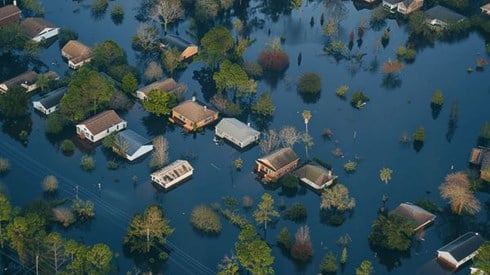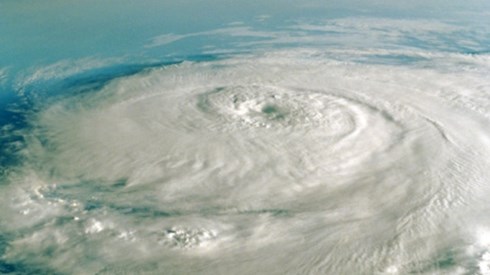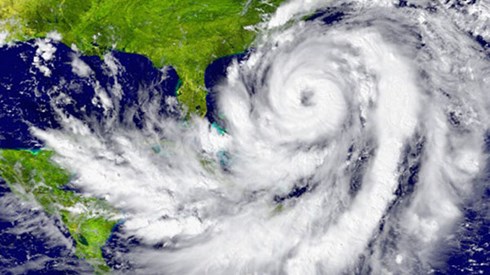Parametric Coverage: A New Spin on an Old Product

James Ridgeway , Linda Der Schwartz | July 09, 2018

Editor's note: The following article is based on a presentation from this year's fifth annual Pinnacle University (Pinnacle U) event that took place in Pinnacle's Bloomington, Illinois, office. The Pinnacle U program teams Pinnacle actuarial analysts and interns with Illinois State University students to research and prepare presentations on topics of actuarial interest. The groups then present to a panel of insurance company professionals, which provides the participants' feedback, along with time for questions and answers.
What Is Parametric Coverage?
Unlike traditional insurance coverage, parametric coverage is not an indemnification product. Instead, with parametric coverage, a benefit payable is determined in advance of the policy purchase by estimating the loss as accurately as possible, subject to certain conditions being satisfied. The policy cost is based on a predetermined trigger. Parametric coverage arose from the desire for faster claim payouts than typical insurance policies provided.
Examples of parametric coverage triggers include maximum sustained wind speed for hurricane coverage or earthquake magnitude as measured by the Richter scale. These triggers are determined by well-recognized and respected independent third parties such as the National Oceanic and Atmospheric Association and National Earthquake Information Center.
Why Use Parametric Coverage?
An insurer may prefer to use parametric coverage over traditional insurance products because of significant claims-processing savings. With a predetermined trigger and indemnity cost, there is no need for claims adjusting. Further, there is no need to establish a case reserve for reported claims. With parametric coverage, the insurer will need to accrue for unpaid claims liabilities for events that have occurred but for which complete information about the parametric triggers is not yet known. However, once those triggers are verified, the value of claims is known immediately.
Along these lines, parametric coverage is superior to traditional insurance coverage because insureds are paid more quickly. Insureds also have wider access to coverage for well-defined risks.
Nevertheless, a significant drawback to parametric coverage is evident when insureds may incur more loss than the benefit provided. Moreover, some insureds may receive benefits without sustaining any real losses.
Experts foresee parametric coverage taking a larger role with catastrophic events where there is no need for insurers to dispatch large teams of claims adjusters to assess damages or verify coverage. Considerable time and expense are associated with the thousands of claims resulting from catastrophic events. Parametric coverage eliminates the need for claims adjusters and requires only verification of the triggering event for claim payment.
Expanding Applications for Parametric Coverage
Because of more objective payouts and improved risk management over traditional insurance, parametric coverage should also enable geographic regions currently lacking well-developed insurance programs to access insurance benefits. In Africa, for example, individual loss assessment can be very expensive in underserved areas for perils such as drought.
In such regions, the loss area requiring assessment, like a rural farm, often has very remote access, and the nearest claims adjuster may be thousands of miles away. The biggest challenge currently preventing parametric coverage implementation in these zones is the lack of technology or independent organizations to verify whether a trigger event has occurred. Once such organizations and/or technologies exist to assess the coverage triggers, parametric coverage is likely to offer monetary protection to areas that desperately need it.
Another potential application for parametric coverage is to help inject short-term liquidity into underdeveloped nations suffering from catastrophic events. Many undeveloped countries are ruled by governments unequipped to deal with such society-crippling tragedies. Examples include the Haitian earthquake, the West African Ebola outbreak, and the recent Guatemalan volcanic eruption. In these cases, the major benefit that parametric coverage can provide is the rapidity with which the insured receives a payout. With a plan in place before the event, governments are empowered to efficiently and quickly deliver vital resources to the areas where they are most needed to save lives.
In several instances, countries have combined to form multinational risk pools to act as parametric coverage for catastrophic events common to their regions. These include the Caribbean Catastrophe Risk Insurance Facility (CCRIF) and African Risk Capacity. CCRIF helps Caribbean countries recover from hurricanes, earthquakes, and floods, while African Risk Capacity provides parametric coverage for drought, erratic rainfall, and high temperatures. Isaac Anthony, CEO of CCRIF, said by pooling risks together with other countries, each risk pool participant can achieve as much as a 50 percent decrease on its premiums when compared with traditional insurance.1
Parametric Coverage and Blockchain Technology
There is talk of using a parametric product to decentralize insurance by employing blockchain technology. Such a decentralized product removes the need for an insurer to underwrite and process claims. Furthermore, utilizing blockchain and smart contracts for parametric coverage can provide a level of transparency and trust to the insured.
In order to understand how it would work, imagine a blockchain where each block operates as a ledger. The first block stores data (policy information) and some general information about the location of the block in the chain, next a smart contract is coded into the block. The smart contract then connects to a data provider that checks to see if a trigger event has occurred and whether a payout is warranted. If the data indicates a trigger event meets the threshold, the smart contract automatically executes itself according to the coded terms. The smart contract then proceeds through a peer-to-peer network to verify everything is in order.
Conclusions
With the ever-increasing amount of available data, it is easy to imagine parametric coverage assuming a larger role in the insurance world. With fewer expenses incurred and the ability to provide benefits to areas heretofore unserved, and for coverages previously deemed uninsurable or unprofitable, parametric coverage may one day rival traditional insurance in certain sectors.
- Melody Schreiber, "A Super-Nerdy Insurance Plan Could Save Poor Countries from Damage Caused by Climate Change," Quartz, November 8, 2016.
James Ridgeway , Linda Der Schwartz | July 09, 2018






